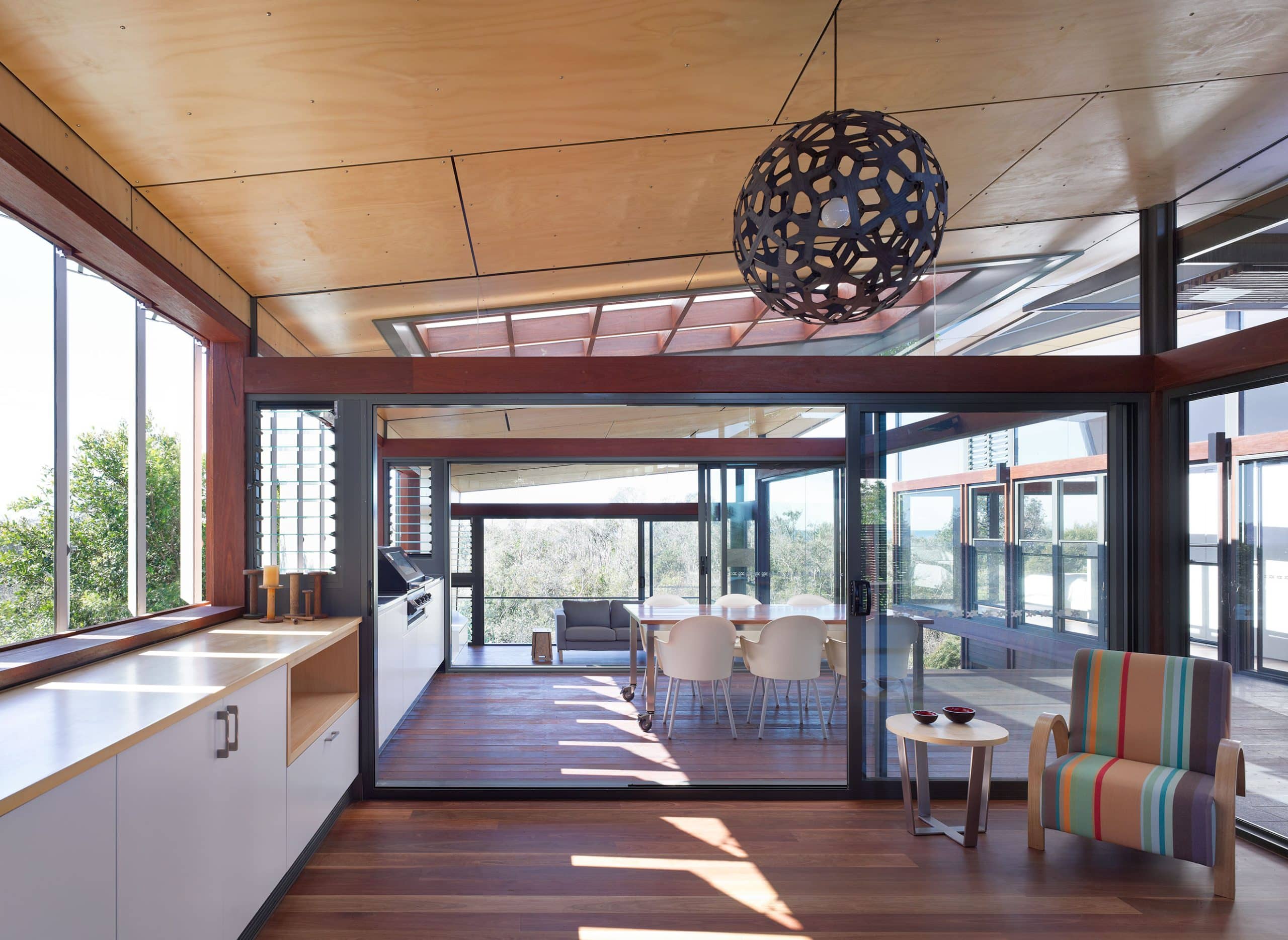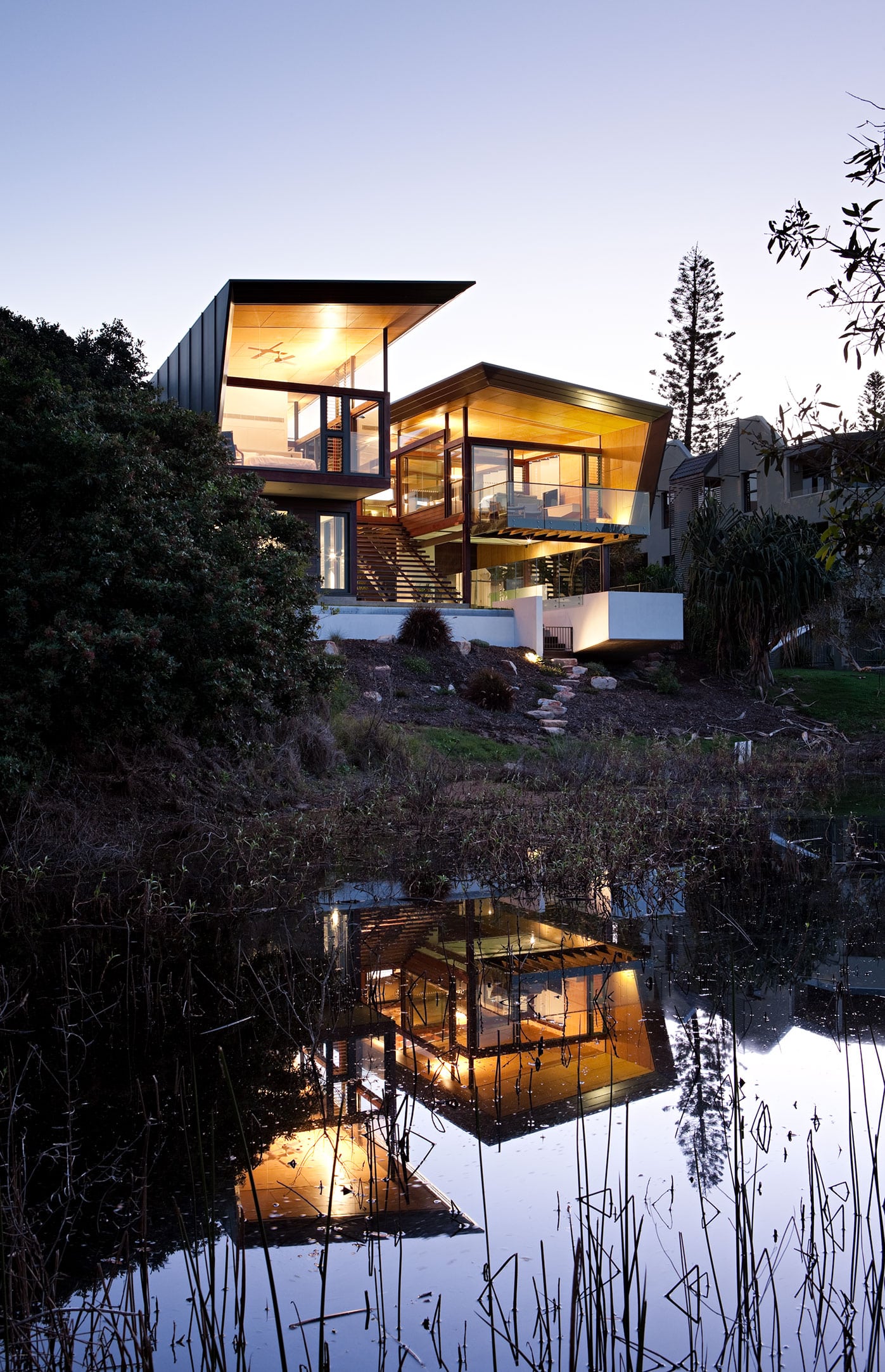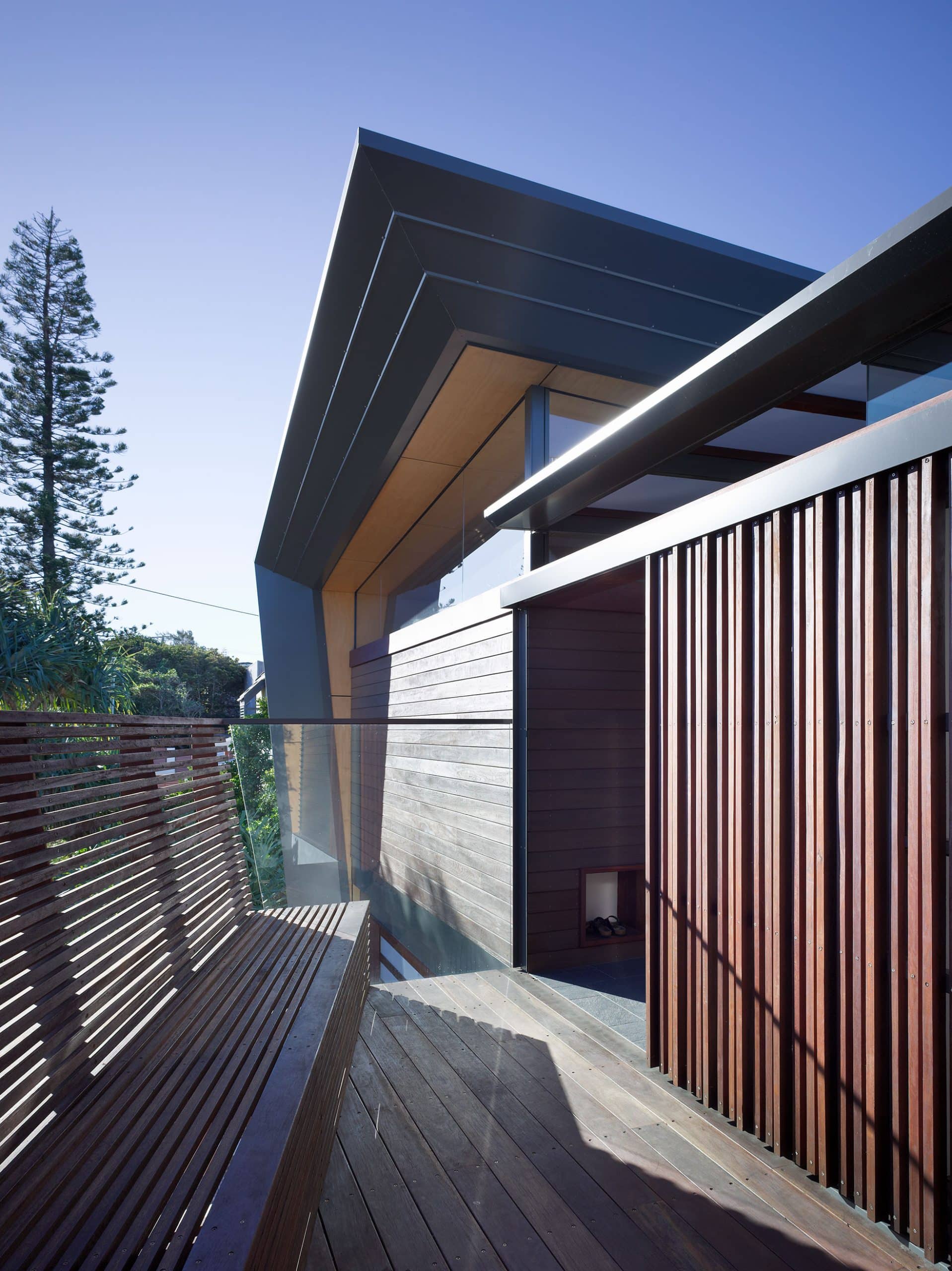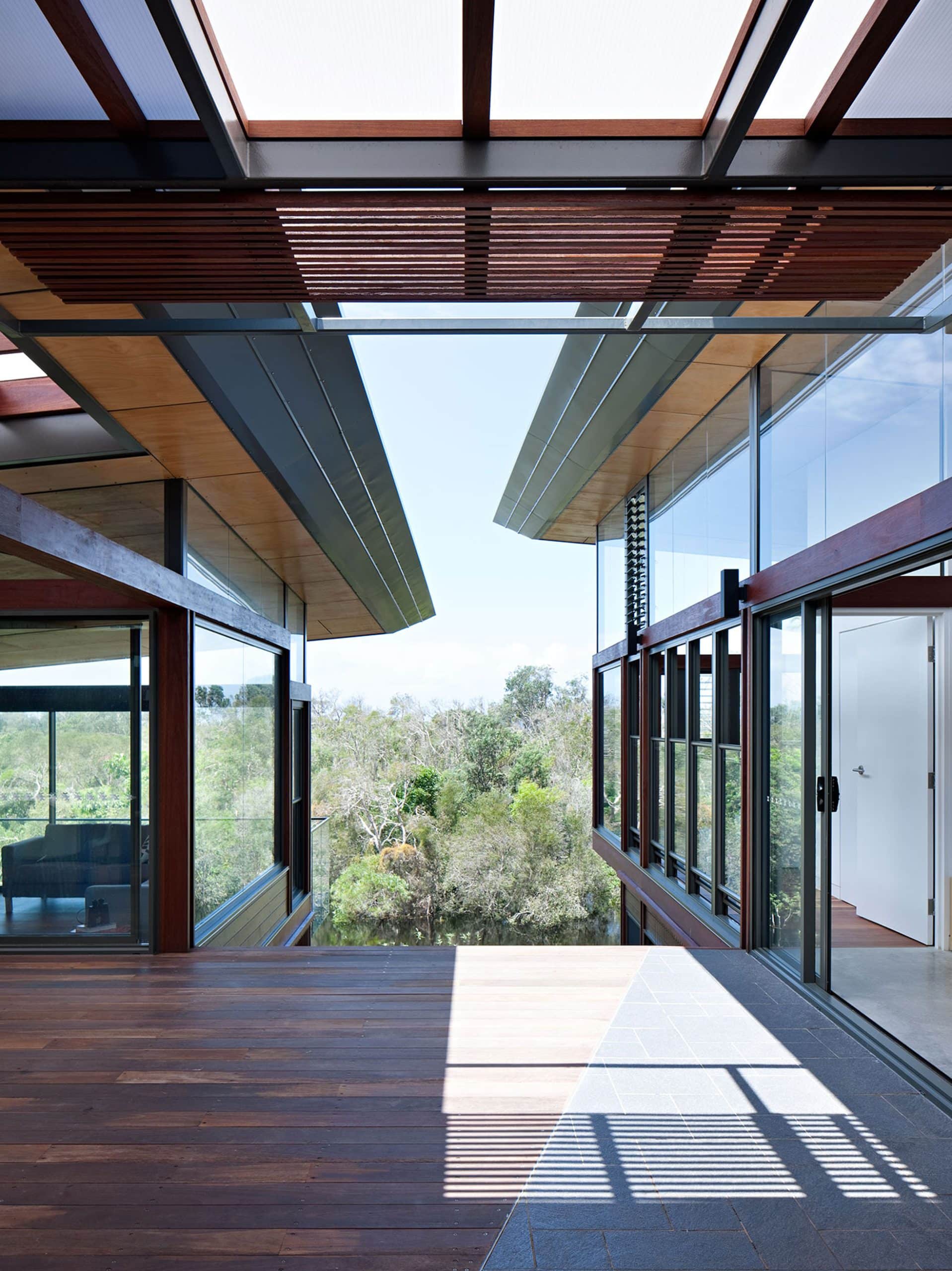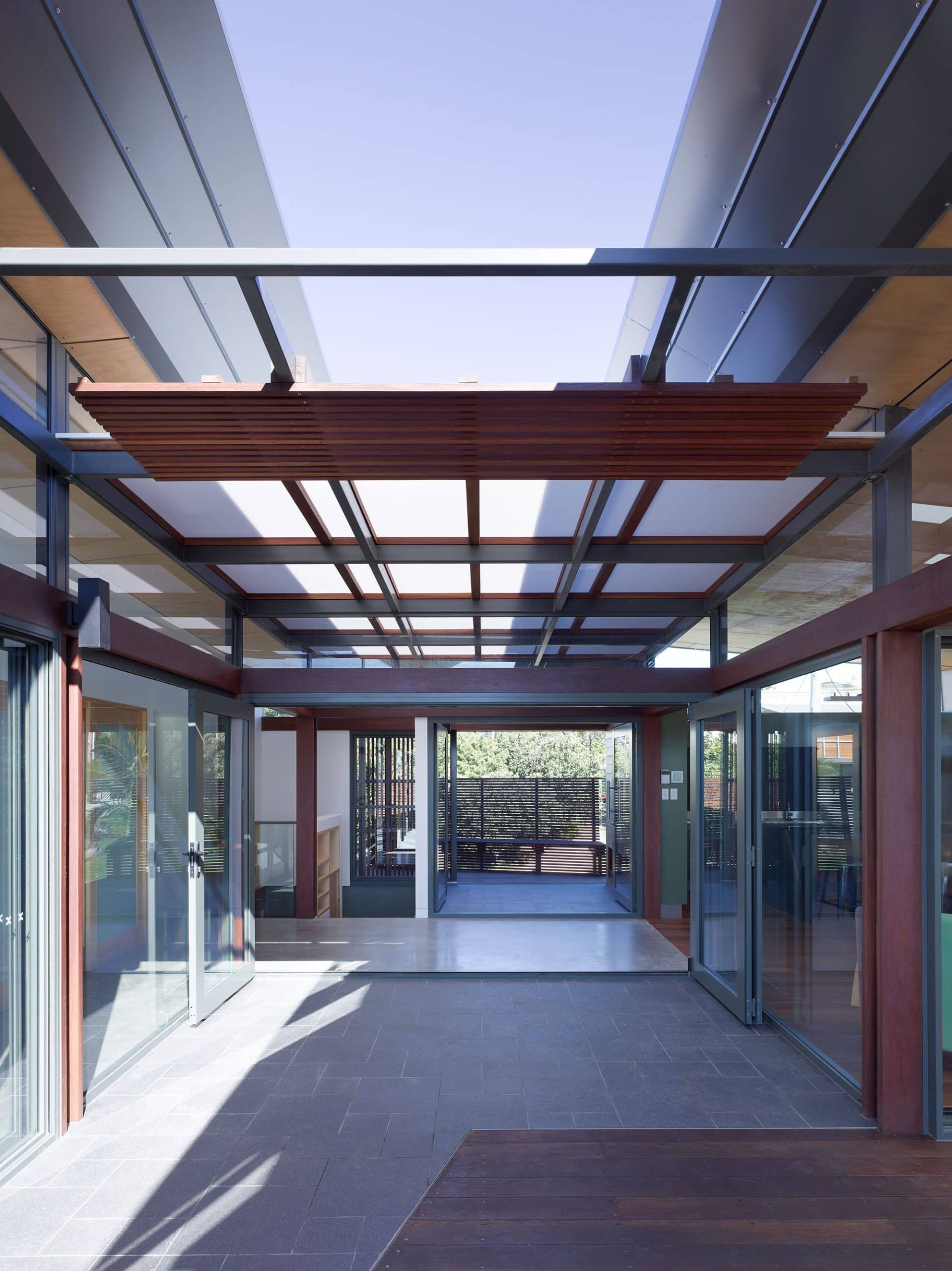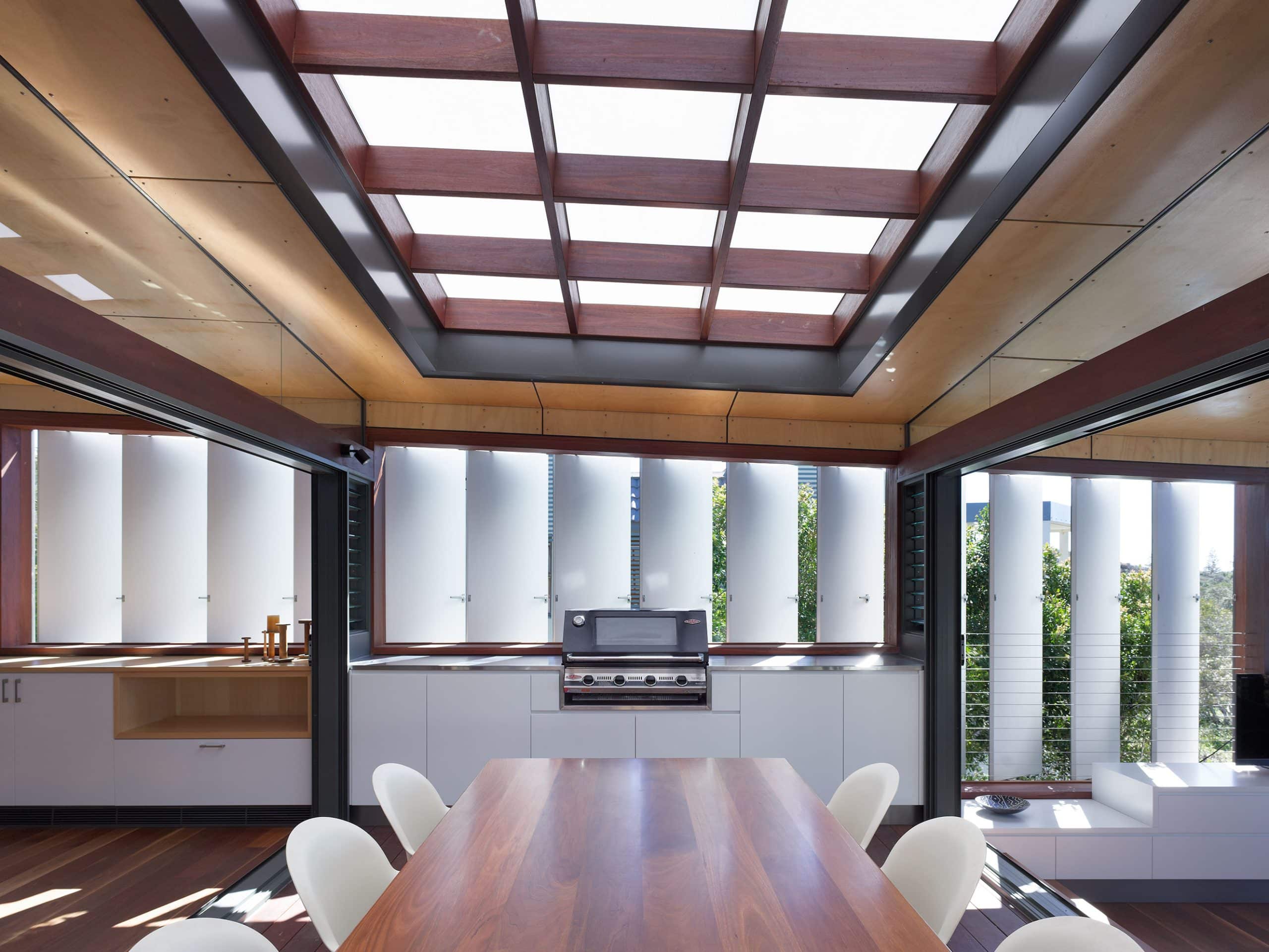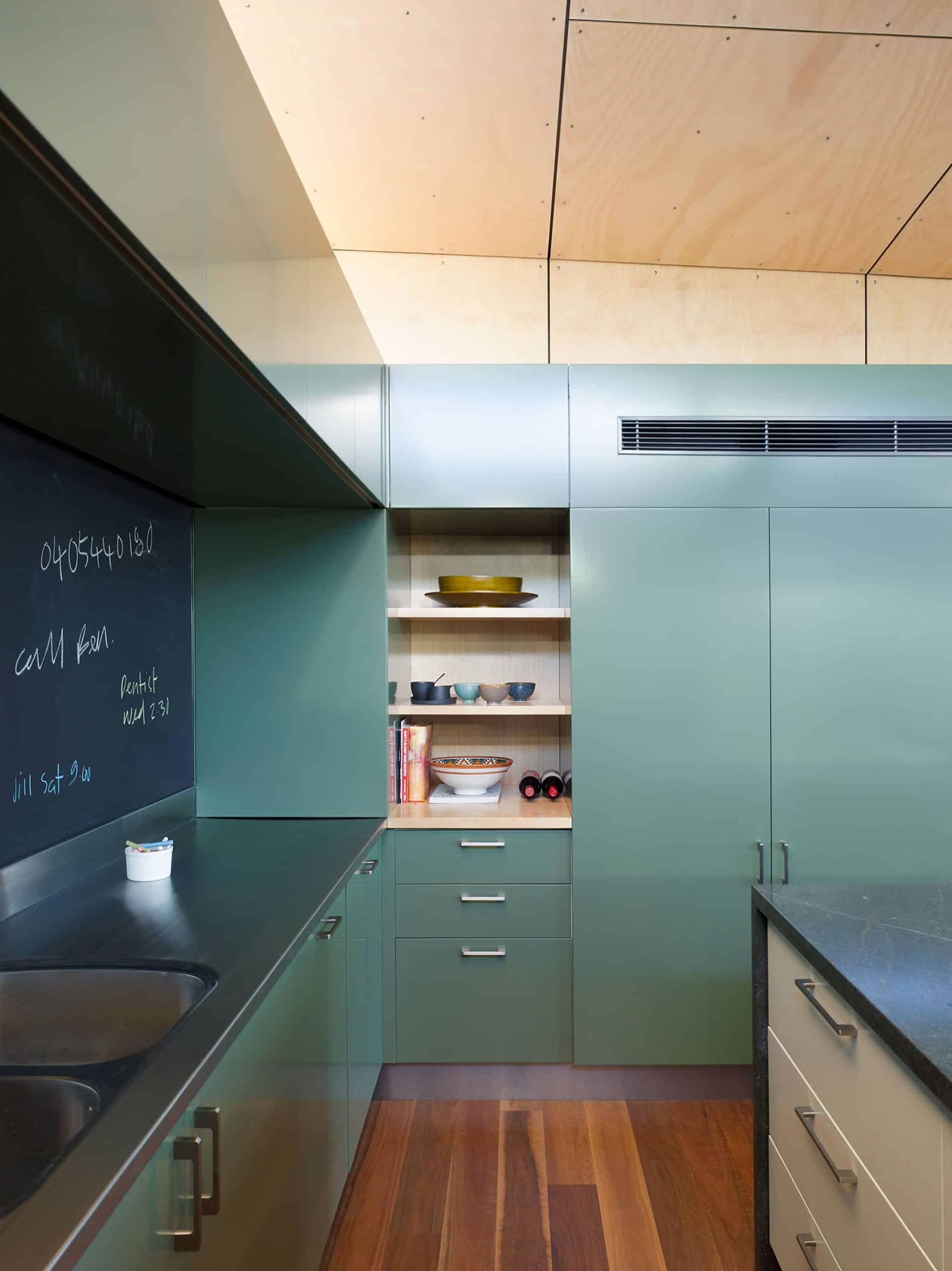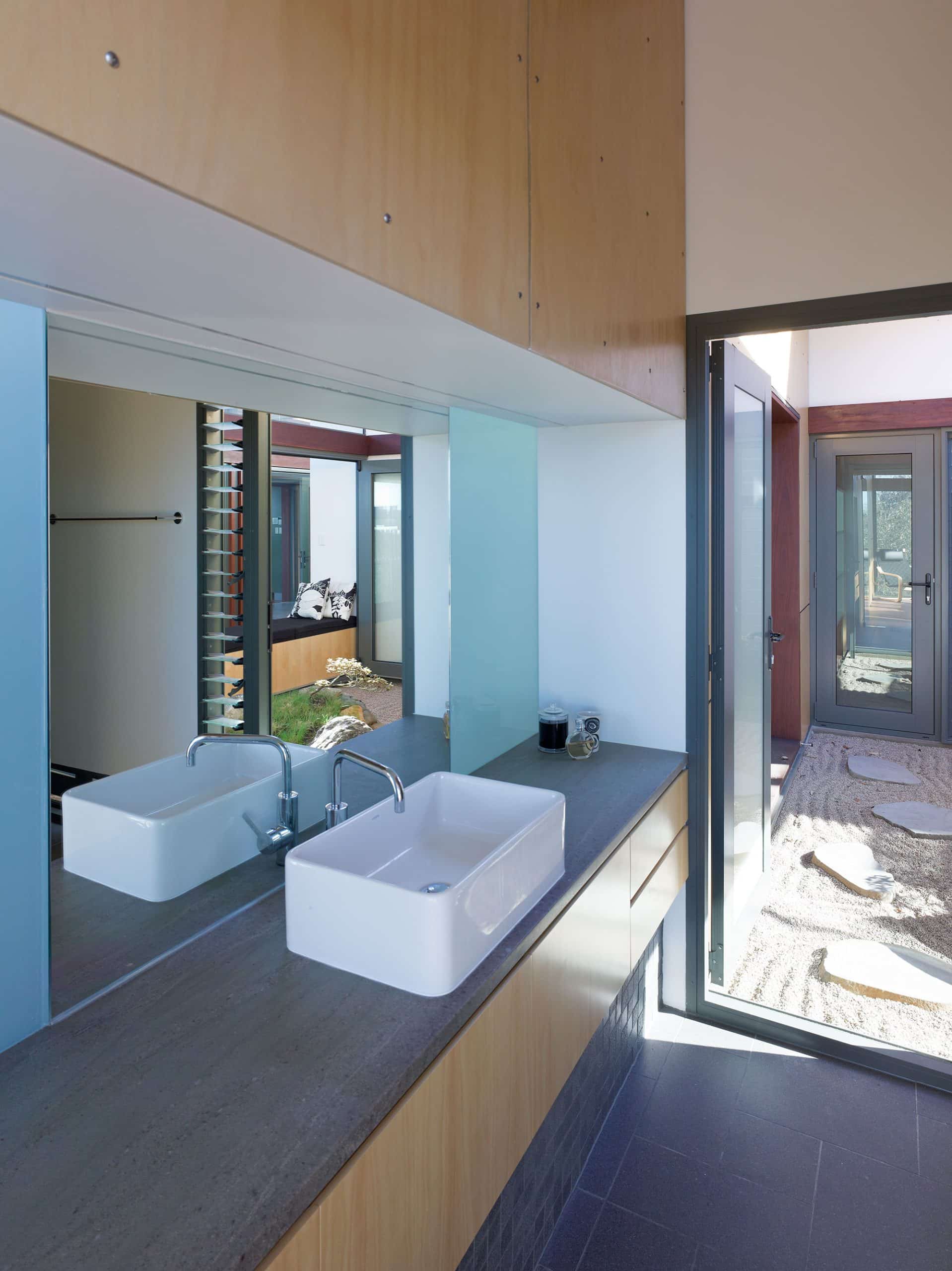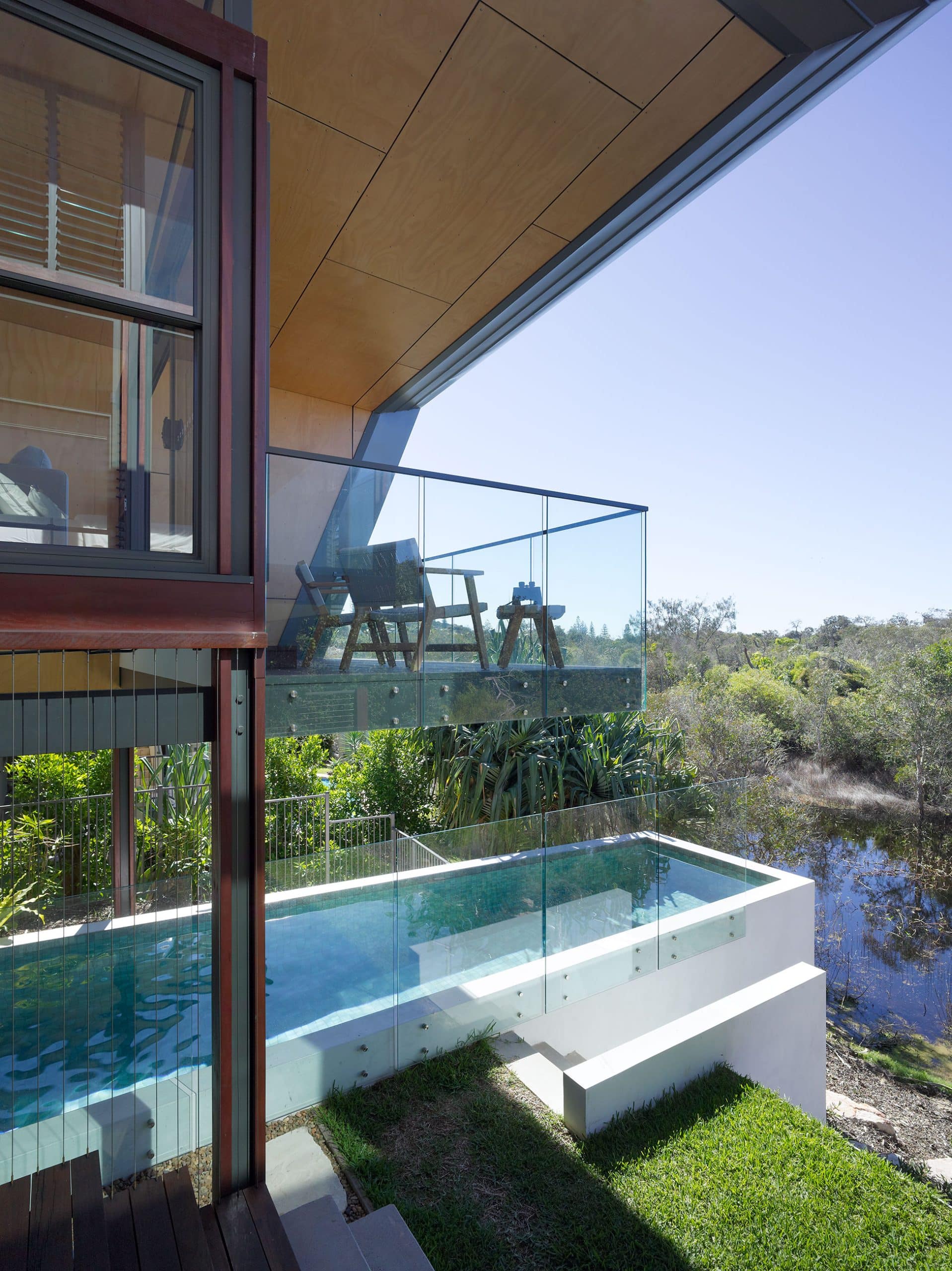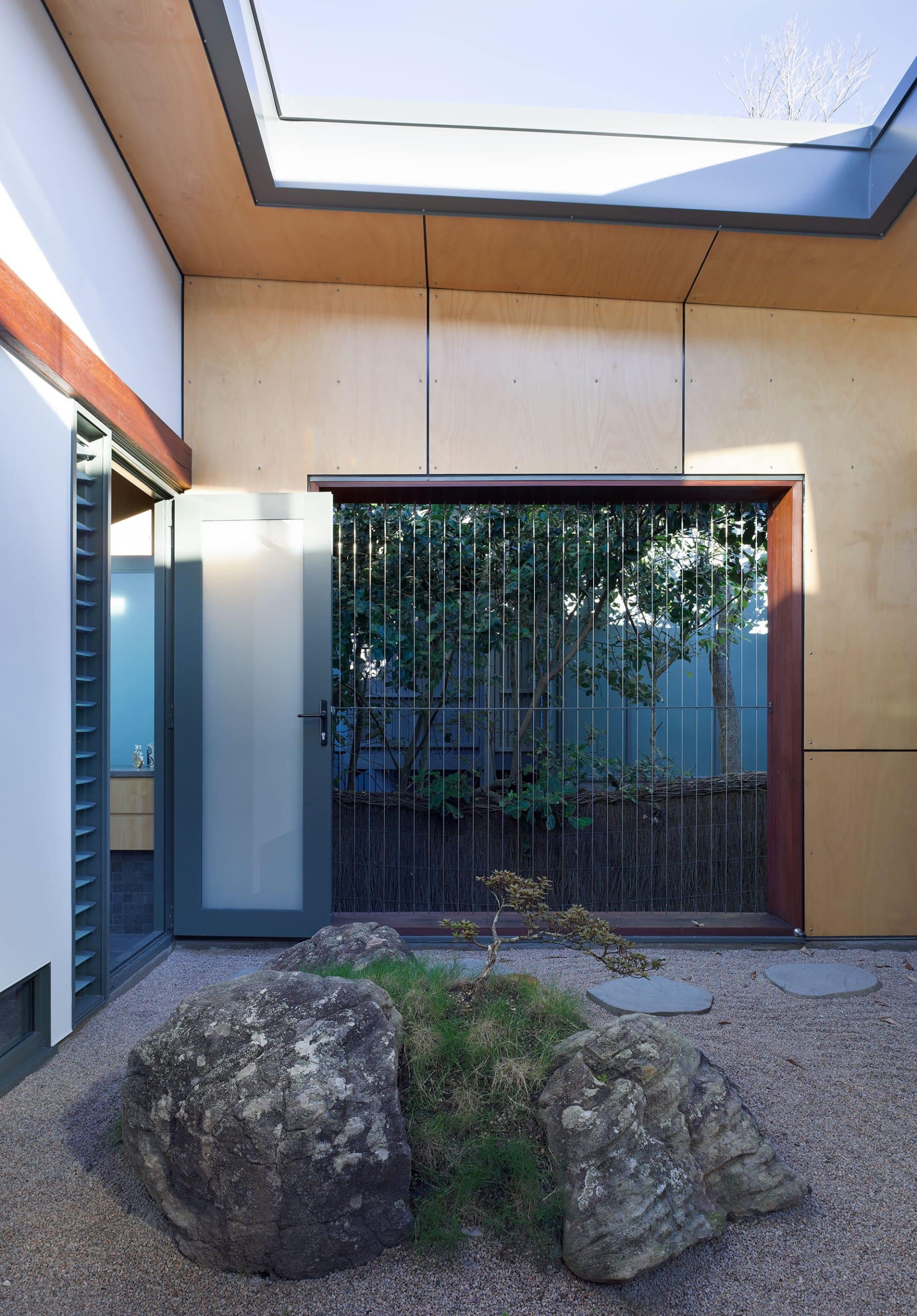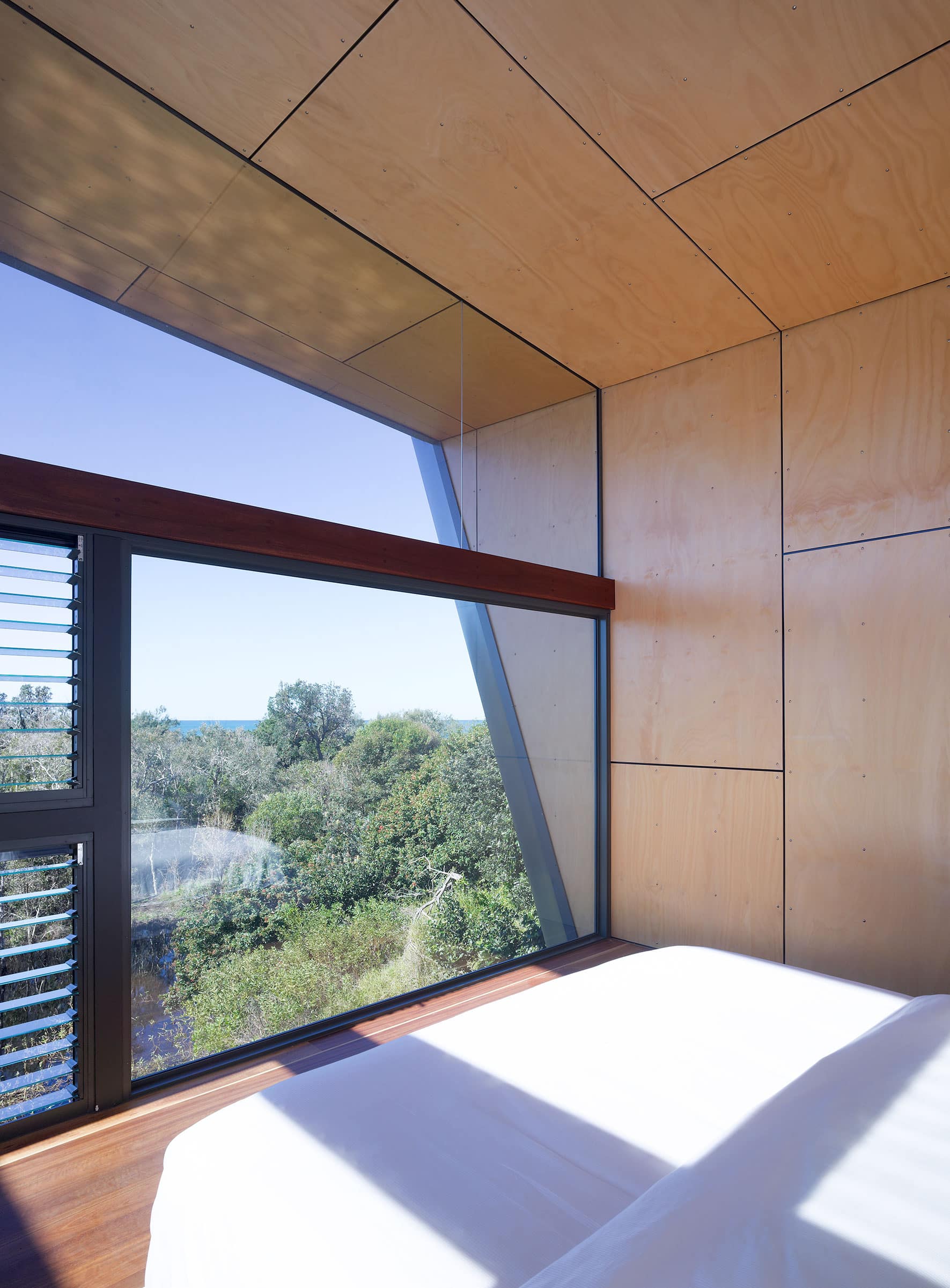This home’s design aims to minimise its impact on the sensitive dunal environment whilst maximising the ability of the owners to enjoy this unique landscape during all times of the day and year. The building’s form is a response to both the immediate site and the subtropical climate and is conceived as two pavilions which float over the native landscape.
A planning approach was adopted which allowed for large external living areas to be incorporated into the central parts of the site, by splitting the house into two pavilions that run down each longitudinal boundary. The fact that these two pavilions are quite narrow means that all spaces enjoy good cross ventilation and, with the opposing pitches of the two roofs, winter sun penetration, whilst protecting the central outdoor space from the harsh southerly winds. The northern facing roof has also been designed to accommodate photovoltaic cells for the dwelling.
The idea that the house is to be negotiated as you would negotiate a path through the site, is also explored, reflecting the nature of the beachside site and the way people have always used it to access the beach.
The ‘path’ through the dwelling is very open and welcoming and somewhat transitionary in nature as once inside the entry space you immediately step through it and back outside – into the primary space of the dwelling – the outdoor room.
From here your view is drawn down the length of the central deck to the landscape beyond. A generous flight of stairs allows for this central out door room to connect with the ground plane. The generous stair acts as another room itself, whereby the user can simultaneously engage with the ground plane activities and the upper levels of the house.
The conceptual planning of the house as both a ‘path’ and a protected ‘outdoor room’ is further enhanced by the formal gesture of the folded wall/roof of each pavilion. Through complimentary materials (clear sealed ply wood, oiled hardwood, clear sealed fibre cement sheet and “Woodland Grey” roof sheet) the gesture of the folded walls ’capturing’ the central out door room conjures up images of trees hanging over a path. The imagery of protecting trees or hands which the folded walls, conjures, is not simply visual. This form creates a very private, protected and secure external space, which also has a direct and necessary link to the greater natural environment.
The building addresses both the pragmatic requirements of a beach house for a large family whilst softly integrating itself within both the built and natural coastal environments.

